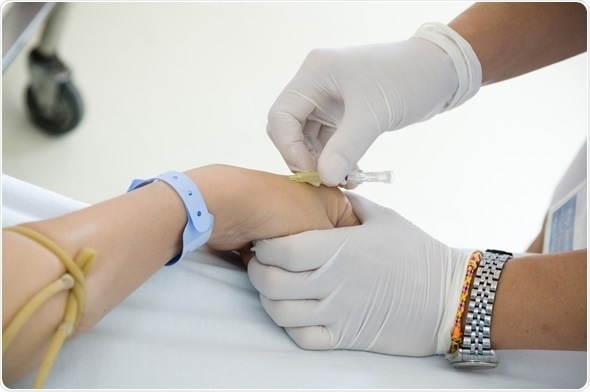For The Latest Medical News, Health News, Research News, COVID-19 News, Pharma News, Glaucoma News, Diabetes News, Herb News, Phytochemical News, Thailand Cannabis News, Cancer News, Doctor News, Thailand Hospital News, Oral Cancer News, Thailand Doctors
Phlebotomy is the drawing of blood, a phlebotomist is someone with special training to do. However, in many countries other healthcare professionals are also capable of drawing blood (e.g. doctors, nurses, laboratory and emergency medical technicians).
The aim of the phlebotomist is to obtain blood samples and this is most commonly done via the venous system through venipuncture, which is one of the most common invasive procedures used in modern medicine.
Phlebotomy may be employed for diagnostic, therapeutic or charitable reasons, in cases such as infections, polycythemia vera (a neoplasm caused by overproduction of red blood cells from the bone marrow) or blood transfusions, respectively.

The most appropriate site to draw blood is selected based on factors including vessel accessibility, patient’s age and health status. Usually the antecubital area, where the elbow bends is used to access the median cubital vein, since it’s easy to visualize and puncture, it’s also more stable than its neighbors, the cephalic vein, accessory cephalic vein and basilic vein.
A tourniquet is applied about a hand’s width above the selected site, the patient is asked to make a fist and the needle is positioned at a 30 degree angle while entering the vessel swiftly. The tourniquet is then removed once sufficient blood has been acquired and the needle is withdrawn gently from the vessel while pressure is applied at the puncture site for a few minutes to control bleeding.
In patients who are more difficult to obtain a median cubital vein blood sample from (e.g. infants), other sites such as the heel or scalp may be used in combination with a local anesthetic, such as lidocaine, to reduce pain.
To ensure the safety of the patient and healthcare professional, and maintain the quality of the sample, proper identification of the patient and labeled collection tubes are important. Appropriate hand hygiene (i.e. thoroughly washing hands or using an alcohol hand rub), sterile gloves and equipment should be used, and the entry site should be disinfected with 70% alcohol, before puncturing the blood vessel.
Other safety measures include, avoiding recapping of used needles and a designated puncture-resistant bin for the disposal of all sharp objects contaminated with the patient’s blood. These important measures attempt to reduce the likelihood of needle stick accidents, which can spread disease and be quite distressing for those involved.
In order to treat a patient, diagnosis of infectious agents or other abnormalities is the first step, to which blood samples are a vital component. In addition to diagnosing, the therapeutic value of access to blood vessels includes infusions for the application of pharmaceuticals such as those required for nutritional purposes or chemotherapy.
The major contraindications for phlebotomy are skin conditions like cellulitis or abscesses that would cause direct seeding of infectious agents (e.g. bacteria) into the blood. Other complications that should be taken into account are the presence of vascular access devices in hospitalized patients, vascular grafts, bleeding under the skin and if the patient has palpable venous fibrosis.